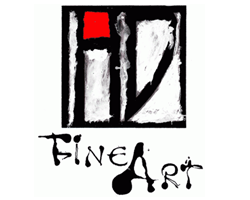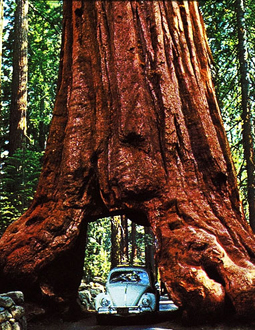Product Description
Michele Oka Doner Tree Bark server (unique) 1998


MICHELE OKA DONER (b. 1945) USA
Tree Bark server (unique) 1998
Solid cast silver in a naturalistic form of a piece of tree bark with an inherent hole.
***The weight is in excess of 250 troy ounces of silver
Exhibited: Inside Design Now: National Design Triennial, Cooper-Hewitt, National Design Museum, New York, 2003.
Illustrated: Michele Oka Doner, Natural Seduction, S. Ramljak, M. Lapidus, A. C. Danto (New York: Hudson hills Press, 2003) pp. 170-171; Inside Design Now: National Design Triennial, Donald Albrecht, Ellen Lupton, et al. (New York: Cooper-Hewitt, National Design Museum, 2003), p. 146.
H: 3 1/2″ x L: 16″ x D: 7″
Michele Oka Doner is an internationally acclaimed New York-based artist and designer whose work translates natural forms–plant fronds, berries, shells, and life observed beneath the lens of the microscope–into objects of extraordinary power and seduction rendered in bronze, precious metals and stones, concrete handmade papers, ceramic, and now, glass. Since first appearing on the national scene in 1970 as the youngest artist showcased in the defining landmark museum exhibition Objects USA. Oka Doner has built a career encompassing monumental sculptures, public art, jewelry, and functional objects that range from fireplace tools to evening bags. Oka Doner was born in Miami Beach in 1945. Though she received her formal education and advanced degrees at the University of Michigan in Ann Arbor, the artist has always cited as her primary laboratory the turbulent natural treasures of Southern Florida's oceans, tidal pools, beaches, gardens and tropical forests–boundless living resource libraries she visits on a monthly basis to gaze upon and gather samples that later inspire pieces of every size and type. Oka Doner has said that she strives with her work to “play the role of the translator and editor of life forces creating objects that go far beyond static formal beauty to encourage contemplation and wonder.” Informed by her ongoing research into scientific literature and poetry, as well as her expeditions in the natural world, Oka Doner uses the tools of physical expression to invite us along on her wanderings through the realm of the infinite. Oka Doner is also admired for her numerous site-specific, permanent public art commissions including such projects as the golden tiled Radiant Site at New York's Herald Square Subway Station (1990) and A Walk on the Beach, a half-mile long expanse of terrazzo and bronze floor continually unfolding at Concourse A of Miami International Airport (1995 to present). Oka Doner's sculptures and functional objects are included in many prestigous private and public collections, including those of The Metropolitan Museum of Art and the Smithsonian's Cooper-Hewitt National Design Museum in New York City, the Art of Institute of Chicago and the Virginia Museum of Fine Arts, among others. She has participated in scores of distinguished exhibitions internationally and has been recipient of numerous grants and awards, including honors from the Kress Foundation and the New York State Council for the Arts. In 2004 she received the coveted Award of Excellence from the United Nations Society of Writers and Artists.
Michele Oka Doner Tree Bark server (unique) 1998
You must be logged in to post a comment.
MARIO CEROLI (b. 1938) Italy
“Cavallino” 2004
Brown bottle glass in the shape of a horse with wood composition and framing
Signed: Ceroli
H: 21” x W: 21” x D: 2 3/4″
Price: $30,000
Mario Ceroli has been universally acclaimed at the age of 27, when he was awarded in 1966 wih the Sculpture Prize at the Venice Biennale for his wooden «Cassa Sistina» (a tribute to the Sixtine Chapel). Ceroli has realised important works for several prestigious institutions (such as the equestrian sculpture for the RAI, which has become the national broadcasting channel trademark; the central square, the Church and the theater in Porto Rotondo; a monumental sculpture in FIumicino Airport Rome…), prominent collectors (Agnelli and Barilla among the others), and he has been responsible for the conception of the stage sets of world renowned theaters such as la Fenice-Venice, La Scala-Milan, the Bolchoi-Moscow, the Arenas of Verona and the Opera of Rome in the last thirty years. Since the 1960’s Ceroli’s work has made its mark by using natural wood in particular Russian pinewood, that he assembles with a variety of materials; burnt wood, lead glass, in line with the philosophy of the Arte Povera. In the 1960’s while the artists of Pop Art were reinterpreting the daily life images, Mario Ceroli paid homage to the great classics of the history of art ( Homage to Leonardo da Vinci, Sixtine Chapel, Paolo Uccello, Piero della Francesca, Andrea Mantegna) and reinterpreted his contemporaries like Giorgio De Chirico. The term Arte Povera was used for the first time in September 1967, one year after Mario Ceroli received his prize at the Venice Biennale. One can find nevertheless, the roots of the principal aspects of this movement during the group show that took place at la Tartaruga gallery in Rome in 1965 that included Ceroli, Boetti, Pascali and other artists then all renamed as poveristi.
JAN DE SWART (1908-1987) Netherlands / USA
Peach sculpture c. 1970
Hand carved and formed jelutong wood in a symbolic / erotic form of a peach
For more information see: Jan de Swart: A Day That Becomes a Lifetime, exhibition catalogue (California: Fine Arts Gallery at the San Fernando Valley State College, February 1972); Jan de Swart, Mike McGee and William G. Otton (Laguna Beach, California: Laguna Art Museum, 1986).
H: 7 ½” x D: 4”
Price: $7,500
Constantly seeking and inventing new materials Jan de Swart was a true modernist. He was influenced by artists such as Isamu Noguchi, Harry Bertoia, Charles Eames, and later Sam Maloof and Wendell Castle. Although he had been creating small sculptures since his arrival in California from Holland in 1929, he had not been widely recognized until being introduced to John Entenza, publisher of Arts & Architecture magazine in 1947. Soon thereafter, he was able to create larger works and began collaborating with architects such as Whitney Smith and Victor Gruen on special commissions. His work is in the permanent collection of Los Angeles County Museum of Art, The Smithsonian, and the Ford Foundation. He was honored with the American Institute of Architects Gold Medal for Sculpture in 1965.

Reviews
There are no reviews yet, would you like to submit yours?